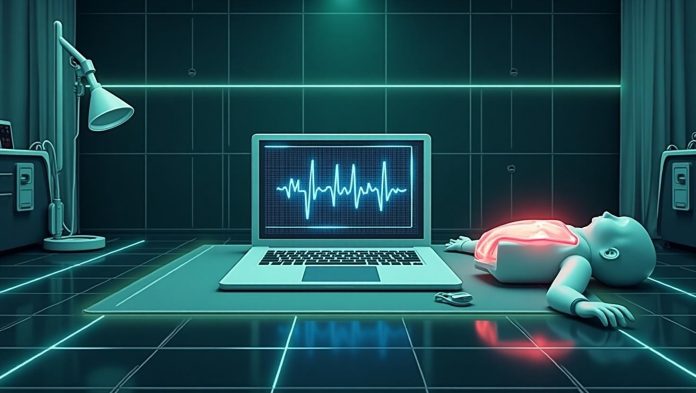Virtual Reality, or VR, is changing how CPR courses are taught. The VR offers an interactive way to learn CPR, which allows you to practice in realistic emergency scenarios. It allows you to perform techniques, receive feedback, and increase confidence, all within a safe virtual environment.
Online CPR certification is becoming more effective and accessible with VR. The technology provides practical experience without the risks or limitations of traditional methods. How does VR enhance learning, improve skill retention, and prepare you for real-life emergencies? The blog will explore how VR is shaping CPR education and the advantages it brings to online training programs.
How VR technology is integrated into online CPR courses
VR or Virtual Reality refers to the use of computer-generated simulations to create a realistic and interactive experience for you. In online CPR certification, VR immerses you in lifelike scenarios that mimic real-world emergencies. Moreover, you can access these situations through VR headsets or online platforms with VR.
The technology can help you perform CPR steps like chest compressions and rescue breaths while interacting with digital manikins or simulations. Here is how VR is typically used in online CPR courses:
- Simulated scenarios: VR can simulate situations like someone collapsing in a crowded space or a person experiencing a cardiac arrest so that learners can practice their response in real time.
- Interactive lessons: Instead of passive video watching, VR provides interactive lessons that teach you to assess situations and perform CPR steps under pressure.
- Skill application in real-time: Students practice compressions and rescue breathing on virtual manikins or simulations that respond accurately to their actions.
- Customizable training: Online CPR certification courses with VR can adapt to various environments and conditions. You can face diverse challenges, such as varying patient ages and body types or environmental conditions like crowded spaces or limited lighting in a VR-simulated environment.
- Instant feedback mechanisms: VR technology often integrates sensors that assess the accuracy of your technique. These sensors provide instant feedback to ensure you know if you are performing chest compressions or other CPR procedures correctly.
Key advantages of using VR for CPR courses
VR technology offers a host of benefits that make online CPR courses more effective, practical, and engaging. Below are the key advantages of integrating VR into online CPR certification programs:
- Realistic simulations: You can experience lifelike, practical simulations that mimic real emergencies.
- Interactive learning: Instead of passive observation, you can participate in CPR procedures actively.
- Safe learning environment: You can make mistakes without consequences, allowing confidence-building through practice.
- Accessibility: VR allows anyone with compatible hardware to access training without needing a physical location.
- Immediate feedback: VR courses instantly correct techniques like compression depth and rhythm.
- Diverse scenario training: Scenarios can mimic various settings (e.g., crowded areas, different terrains, or environmental stressors).
- Enhanced skill retention: Real-time interaction strengthens memory and can help you recall the steps in real-life emergencies.
Why traditional CPR training methods fall short
VR solves the limitations by addressing missing areas in knowledge, practical application, and accessibility, making CPR education comprehensive and effective. While traditional CPR training courses are vital, they come with limitations that VR successfully addresses:
- Limited practice opportunities: Physical manikins are expensive and may not provide feedback on technique errors. VR allows for endless and repeatable training sessions.
- Passive learning: Watching videos or attending lectures alone often leads to weak practical application. VR shifts this to an active and practical approach.
- Accessibility barriers: Many individuals may not have access to in-person courses due to location, time constraints, or financial obstacles.
- One-time courses: Traditional methods don’t always enable frequent, on-demand revisits to maintain CPR skills. However, you can access VR repeatedly for skill refreshers.
How VR Overcomes the Limitations of Traditional CPR Training
One of VR technology’s major strengths is improving skill retention. Studies show that practical training leads to better memory and recall during emergencies. VR courses engage multiple learning styles, such as visual, auditory, and kinesthetic, which leads to deeper learning.
When you practice CPR steps in realistic virtual scenarios, your brain can better retain these actions under stress. VR users increase muscle memory through repetition and practice, vital during real-life emergencies when quick responses are necessary.
Moreover, you can retry the same scenario multiple times without pressure or judgment, improving your skills and allowing for mastery. This process increases confidence and ensures that you can apply CPR effectively when it is most important.
Considerations for implementing VR for CPR courses
Although VR offers many advantages, there are a few challenges when using this technology in online CPR certification:
- Cost of hardware and technology: VR headsets or compatible software may be expensive or inaccessible for some learners or organizations.
- Learning curve for you: Not all users are familiar with VR interfaces or simulations, which may require additional orientation.
Conclusion
Including VR in online CPR certification courses can help people learn life-saving skills. VR provides interactive, practical learning that makes understanding and retaining CPR techniques easier. The VR technology can also help you experience real-life emergencies while receiving instant feedback and practicing repeatedly.
Additionally, VR addresses many challenges of traditional CPR training, making learning more effective and accessible. As technology develops, VR will play an important role in healthcare education and prepare individuals for emergencies.



 Bitcoin
Bitcoin  Ethereum
Ethereum  Tether
Tether  XRP
XRP  USDC
USDC  TRON
TRON  Lido Staked Ether
Lido Staked Ether  Cardano
Cardano  Avalanche
Avalanche  Toncoin
Toncoin  Solana
Solana